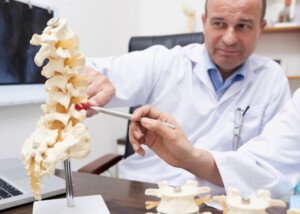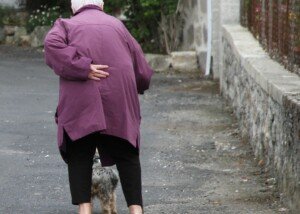If both of your legs begin aching after you’ve been standing for only a few minutes, and this keeps happening, there are four likely causes, and one is serious.
Even in “out of shape” people, it is not normal to suffer aching legs after standing for a few minutes – when benign causes are ruled out such as overdoing it at the gym after a long absence or having a bad cold.
PAD
“Peripheral arterial disease is an inflammatory condition of the arteries carrying blood from the heart to the periphery (most common in smokers and diabetics),” says Jenepher Piper, a family practice nurse practitioner for Maryland Family Care for 25+ years and a former nurse with Home Care Nurse for Johns Hopkins Home Care.
“Inflammation combined with high circulating cholesterol leads to the buildup of plaque in these vessels, reducing the flow of oxygenated blood reaching tissue,” continues Piper. “When tissue is deprived of oxygen, spasm and pain results.”
Varicose Veins
“Varicose veins lead to pooling of un-oxygenated blood in the legs, mixing with and diluting the newly oxygenated blood from the arteries. Again, oxygen deprivation leads to muscle spasm and pain.”
Varicose veins can be a symptom of chronic venous insufficiency, in which the valves of the veins do not work properly.
Venous insufficiency usually comes with at least one of these symptoms: skin discoloration, skin ulcers and leg/ankle swelling.
Lumbar Stenosis
If you have this, you’ll also have low back pain that’s relieved by bending a bit forward when you walk.
In severe cases people are bent quite far forward when walking or even just standing still.
Lumbar stenosis “is a narrowing of the spinal canal caused by chronic, usually age-related arthritis and degenerative disc disease, but also more acute conditions like herniated discs,” says Piper.
“All of these conditions cause crowding and in some cases direct pressure on the spinal cord, blocking nerve impulses to the peripheral nerves at all levels below the defect.
“Emanating from the lumbar spine (lower back), these peripheral nerves become irritated, sending pain signals to both legs.
“In any individual, standing for any length of time depends on good posture and core strength to support proper alignment of the spinal column.
“If someone has lumbar stenosis, their core strength and posture are adversely affected by de-conditioned muscles in these areas, providing little support and potentially increasing the crowding of the spinal cord and the signals to the peripheral nerves.”
Electrolyte Disturbance (magnesium, potassium, calcium)
“Several minerals (electrolytes) are essential to muscle contraction and relaxation,” says Piper.
“Low blood levels of any of these can impair proper relaxation, causing spasm and pain.”
Patients suffering from conditions such as coronary artery disease, obesity and diabetes turn to Nurse Practitioner Piper to help them best manage their overall health.
 Lorra Garrick has been covering medical, fitness and cybersecurity topics for many years, having written thousands of articles for print magazines and websites, including as a ghostwriter. She’s also a former ACE-certified personal trainer.
Lorra Garrick has been covering medical, fitness and cybersecurity topics for many years, having written thousands of articles for print magazines and websites, including as a ghostwriter. She’s also a former ACE-certified personal trainer.
.




























